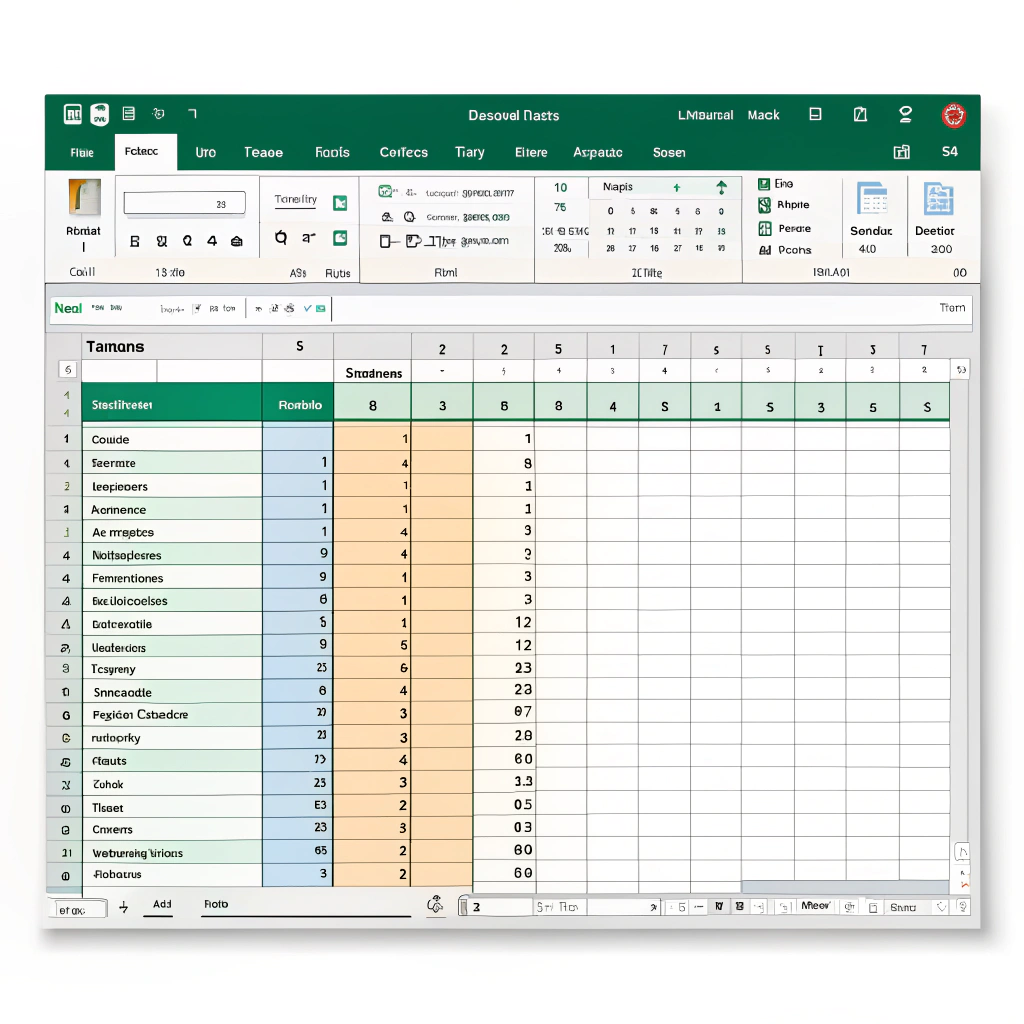
Introduction to Automation and Its Benefits for Businesses
In today’s fast-paced business world, business automation is no longer a luxury—it’s a necessity. As companies strive to stay competitive, automate routine processes, and scale effectively, the integration of cutting-edge technologies becomes essential. In this article, we’ll explore why transitioning to automated systems is a game-changer for businesses and the benefits that come with it.
The Need for Automation
Automation is all about creating systems that perform tasks without human intervention. For businesses, the advantages are clear:
- Efficiency Boost:
Automation eliminates the need for manual processes, speeding up operations and freeing up valuable time for employees to focus on strategic tasks. - Reducing Human Error:
When processes are automated, the potential for human error is significantly reduced, ensuring higher accuracy and consistency. - Scaling with Ease:
Automated systems can handle large volumes of work without the need to hire additional staff, making it easier for businesses to scale without incurring significant costs.
By integrating tools like Python, MongoDB, and Pandas, businesses can create seamless, self-sustaining workflows that manage everything from data entry to complex financial reporting—all without manual intervention.
Key Benefits of Automation
Now, let’s take a deeper dive into the key benefits businesses gain when embracing automation:
- Faster Data Processing:
With automated systems, data can be processed in real time, dramatically improving response times. Tasks that previously took hours or even days can be completed in minutes, allowing businesses to act faster on insights. - Reduced Operational Costs:
Automation reduces the need for manual labor and minimizes costly mistakes. By replacing repetitive tasks with automated systems, businesses can save money in the long run—whether it’s reducing the need for extra staff or avoiding costly errors. - Improved Decision-Making with Data-Driven Insights:
By automating data collection and analysis, businesses can access real-time, actionable insights that drive smarter decision-making. Technologies like Python and Pandas can help process large datasets, identify patterns, and present results that influence key decisions.
Tip:
Embrace automation to unlock your business’s full potential and stay ahead of the competition. 🚀 Automation isn’t just about saving time—it’s about making smarter decisions and scaling efficiently.
Transitioning from Manual to Automated Systems: The Step-by-Step Process
Making the shift from manual to automated systems can seem daunting, but with the right approach, the transition can be smooth and highly rewarding. We’ll guide you through the essential steps to help you move from manual processes to automated workflows using Python, MongoDB, and Pandas.
Step 1: Assessment & Planning
The first step in transitioning to automation is to thoroughly assess your current workflows and identify areas that can be automated.
- Analyze Existing Processes: Look for repetitive tasks, data entry points, and manual processes that consume a lot of time and resources. These are the best candidates for automation.
- Identify Pain Points: Think about where delays or human errors are most common in your workflow. These are often areas where automation can have the biggest impact, like in invoicing, payroll, or reporting.
- Establish Clear Goals: Before diving into automation, define what you want to achieve. Is it faster data processing? More accurate reporting? Or maybe improved efficiency? Setting goals will help guide the entire process.
Step 2: Choosing the Right Tools
Now that you’ve identified where automation is needed, it’s time to choose the right tools to build your automated system. Here’s why the tools we’ve selected are perfect for the job:
- Python: Python is incredibly versatile and easy to learn. It’s the backbone of many automation processes due to its power, flexibility, and vast library of packages. Python can handle everything from small scripts to large-scale automation, making it ideal for businesses of all sizes.
- MongoDB: When dealing with large datasets, traditional databases can be cumbersome and slow. MongoDB is a NoSQL database that handles unstructured data efficiently and can scale easily with your needs. It’s perfect for businesses that need real-time data storage and retrieval.
- Pandas: Pandas is a powerful Python library used for data manipulation and analysis. It makes working with large datasets easier, allowing you to clean, process, and transform data for reporting or analysis quickly and efficiently.
Step 3: Implementation
With your tools in place, it’s time to start building your automation system. Here’s how you can begin:
- Develop and Deploy Automation Scripts: Using Python, you can write scripts to automate processes like data entry, report generation, and even email notifications. Start small with simple tasks and gradually increase the complexity as you become more comfortable with the process.
- Set Up MongoDB for Secure Data Storage: Configure MongoDB to store your business data securely, ensuring that data is organized and easily retrievable. MongoDB’s flexibility allows you to store different types of data in a structured way, making it ideal for growing businesses.
- Integrate Pandas for Data Analysis: Use Pandas to clean and manipulate your data. Whether it’s merging datasets, filtering data, or generating reports, Pandas will help you organize and process your data with minimal manual effort.
Tip:
Proper planning and tool selection are the keys to a smooth transition! 🛠️ The right tools make automation more effective, and planning ensures that the transition aligns with your business goals.
The Power of Python in Automating Business Workflows
Python is a game-changer when it comes to automating business workflows. We’ll explore how Python can automate crucial tasks, especially in accounting and data processing, helping businesses save time, reduce human error, and improve overall efficiency.
Python for Data Processing
Data processing is an essential part of many business operations, especially when it comes to handling large datasets. Python offers several powerful tools to automate this task and transform your business workflows.
- Automating Repetitive Tasks: Repetitive tasks such as data entry, invoice generation, and report creation can be time-consuming and prone to errors when done manually. Python can automate these tasks, significantly speeding up the process. For example, you can write a Python script that automatically imports data from spreadsheets, processes the data, and outputs formatted reports. This eliminates the need for manual entry and ensures more accurate results.
- Python’s Libraries for Data Handling: Python has powerful libraries like Pandas that simplify working with large datasets. Pandas allows you to clean, merge, and analyze data efficiently. You can filter, aggregate, and manipulate data using simple commands, enabling you to quickly derive insights from large volumes of information.
- Data Cleaning: Use Pandas to identify and remove inconsistencies or missing values in your datasets.
- Merging Datasets: Combine multiple data sources into one unified dataset for easier analysis.
- Analysis: Use Pandas to perform complex data analyses, making it easier to extract actionable insights for decision-making.
Financial Automation
For businesses with in-house accounting departments, Python can drastically reduce the time spent on monthly financial processes. By automating financial tasks, your accounting team can focus on strategic work while leaving the repetitive tasks to Python.
- Automating Monthly Accounting Tasks:
- Balance Sheet Generation: Python can pull financial data from your databases, process it, and automatically generate balance sheets.
- Income Statement Analysis: Python scripts can automate the creation of income statements by gathering revenue and expense data, then summarizing it into readable reports.
- Cash Flow Reports: Python can automatically calculate cash flow by analyzing transaction data, and generate the necessary reports for stakeholders.
- Generating PDF Reports: Python can also automate the creation of PDF reports. Using libraries like ReportLab and FPDF, Python can generate beautifully formatted PDFs containing financial reports, invoices, and other essential business documents. This eliminates the need for manual formatting and ensures consistency across all reports. For example, you can automate the generation of monthly financial statements in PDF format, ready to be shared with clients or stakeholders.
Tip:
Python is a powerful tool that can automate anything from simple tasks to complex systems. 💡 Whether it’s generating financial reports, cleaning data, or automating invoicing, Python can handle it all and save your team time and effort.
Leveraging MongoDB for Real-Time Data Storage and Access
As businesses transition to automated systems, managing data effectively becomes crucial. MongoDB, a NoSQL database, offers powerful solutions for handling large, dynamic datasets in real-time.Let’s explore how MongoDB can streamline data storage, retrieval, and processing, especially when integrated with Python and Pandas.
Why MongoDB for Automation?
MongoDB’s flexibility and scalability make it an ideal choice for businesses seeking to implement automation. Here’s why:
- Handling Large and Complex Datasets: Traditional relational databases can struggle when managing massive amounts of unstructured or semi-structured data. MongoDB, with its document-oriented architecture, easily handles large, complex datasets, making it perfect for modern business automation systems. Whether you’re dealing with financial data, customer information, or inventory logs, MongoDB can store it all efficiently and at scale.
- Real-Time Access: One of MongoDB’s biggest advantages is its ability to offer real-time access to data. This is especially beneficial in a business setting where decision-makers need to access up-to-date information quickly. For instance, in accounting, having real-time access to financial data enables accountants and business owners to make informed decisions immediately. MongoDB’s quick read/write operations make it ideal for fast, data-driven decision-making.
Integration with Python and Pandas
MongoDB and Python are a dynamic duo when it comes to automated data processing. Python’s simplicity and versatility make it easy to interface with MongoDB, enabling smooth integration into your automation systems.
- Storing Large Datasets: MongoDB allows businesses to store large datasets such as transaction logs, sales records, or financial data. These can be accessed and updated in real-time, ensuring that your data is always current. With the help of Python’s PyMongo library, you can interact with MongoDB directly from your Python scripts, allowing you to store and retrieve data with ease. The integration simplifies the process of storing everything from raw data to processed reports.
- Data Analysis with Pandas: While MongoDB handles storage, Pandas provides the heavy lifting for data analysis. After retrieving data from MongoDB, you can use Pandas to clean, manipulate, and analyze the data. The seamless flow between MongoDB and Pandas makes it easy to process and gain insights from large datasets. Example:
- Sales Data: Store daily sales in MongoDB, and then use Pandas to calculate monthly trends, sales forecasts, or any other key performance indicators.
- Financial Data: Pull financial data into Python, analyze it with Pandas, and then store the results back in MongoDB for reporting.
Tip:
MongoDB is perfect for fast, scalable data management, especially when handling big data. 📊 It integrates seamlessly with Python and Pandas, allowing businesses to process data efficiently while maintaining real-time access.
Using Pandas to Streamline Accounting and Financial Reporting
In today’s fast-paced business world, automating accounting and financial reporting is essential for staying ahead. Pandas, a powerful Python library, can make this process simple, accurate, and efficient. Let’s dive into how you can use Pandas to streamline your accounting processes and produce financial reports quickly.
Why Use Pandas for Accounting?
- Data Cleaning and Preprocessing: Raw financial data often needs to be cleaned before it can be used for reporting. With Pandas, you can:
- Remove duplicates to ensure accurate records.
- Fill missing data to maintain completeness.
- Normalize formats for consistency across datasets.
- Automating Data Merging: Financial data often comes from multiple sources, such as bank statements, invoices, and sales reports. Pandas can merge datasets from various sources seamlessly, so you don’t have to manually compile data anymore. This ensures that all your financial data is consolidated in one place for easier analysis. 📂
Generating Automated Financial Reports
- Profit & Loss Statements: Generate monthly or quarterly profit and loss statements with a few simple commands. Pandas can aggregate data from your sales and expenses and calculate key metrics like:
- Gross Profit
- Operating Expenses
- Net Profit 💰
- Balance Sheets: With Pandas, you can pull asset and liability data from your database and create an up-to-date balance sheet in minutes. 📊 Automatically calculate:
- Current Assets
- Liabilities
- Equity
- Cash Flow Statements: Track cash inflows and outflows automatically. Pandas makes it easy to manage cash flow and ensure that your business stays financially healthy. 💸
Calculating Key Financial Metrics
Pandas can help you calculate critical financial metrics to evaluate business performance. Some examples:
- Profit Margins: Understand how much profit you’re making relative to revenue.
- Revenue Growth: Measure how your revenue increases over time.
- Expense Ratios: Monitor how much of your revenue is going toward expenses.
Tip:
Pandas is a powerful library for handling structured data and turning raw numbers into meaningful insights. 📈 With its simplicity and efficiency, you’ll be able to generate financial reports faster than ever before!
Streamlining Report Generation with PDF Libraries
We’ll explore how Python can simplify and automate the generation of customized financial reports in PDF format, saving you both time and effort.
Python PDF Libraries
There are several powerful Python libraries for generating professional PDF reports, but the most commonly used are ReportLab and FPDF. These libraries make it easy to create custom, client-ready reports without the need for manual formatting or design work.
- ReportLab: ReportLab is a robust library for creating PDFs with rich formatting. It supports the generation of tables, charts, and other complex layouts, making it ideal for producing detailed financial reports like income statements and balance sheets.
- FPDF: FPDF is a lighter, simpler library that’s great for generating quick, structured PDF documents. It allows you to create headers, footers, tables, and custom layouts to make your reports look professional without much hassle.
Automating Financial Documents
By automating the generation of financial reports, you can save a significant amount of time and reduce the risk of human error in your accounting and finance processes.
- Balance Sheets and Income Statements: Automate the creation of these essential documents by pulling data from your MongoDB database. Python can format this data into clearly structured PDFs that you can send to clients or store for record-keeping.
- Tax Forms: Tax season can be a stressful time, but with automated PDF generation, you can quickly create tax forms like VAT reports, tax deductions, and other necessary filings directly from your financial data.
- Client-Ready Reports: Create professional, client-friendly reports with tailored branding and formatting, ensuring that your reports align with your company’s image and are easy to understand.
You can save generated reports directly to your MongoDB database for easy retrieval or automate the process of emailing them to clients when they’re ready.
Tip:
Automating PDF report generation not only saves time but also enhances your professionalism, helping you present data in a clean and polished format! 📝
At Lillqvist Strat, we specialize in automating tasks that improve efficiency and professionalism. If you’re ready to streamline your report generation and make your financial documents look more polished, reach out to us for expert guidance. Together, we’ll take your business to the next level! 🚀
Leveraging Machine Learning for Revenue Forecasting
We’ll introduce how machine learning (ML) can help businesses predict their future revenue, enabling smarter decision-making and more strategic planning.
Revenue Forecasting with ML
Revenue forecasting is one of the most valuable applications of machine learning. By analyzing historical financial data, machine learning models can predict future sales, helping businesses plan for growth and allocate resources effectively.
- Using Historical Data: Machine learning models use past revenue data, sales trends, and other relevant metrics to identify patterns. This enables the model to predict future revenue with increasing accuracy.
- Python Libraries for ML: Libraries like Scikit-learn are powerful tools for developing predictive models. Scikit-learn provides easy-to-use functions for building regression models that can forecast revenue based on various inputs such as sales volume, customer data, and seasonal trends.
Improved Accuracy
The more data a machine learning model is trained on, the more accurately it can predict future outcomes. Over time, the model improves, learning from past trends and adjusting its predictions to reflect new patterns.
- Training Models: By feeding the model with years of historical data, it learns the subtle relationships between different variables and how they impact revenue.
- Reducing Uncertainty: ML forecasting reduces uncertainty by providing data-driven projections rather than relying on gut feeling or manual calculations. This allows for more informed decision-making and better resource allocation.
- Data Quality: High-quality, clean data is essential for accurate forecasting. The better your data, the more reliable your predictions will be.
Tip:
Machine learning can transform your financial data into actionable insights for future growth. By predicting revenue more accurately, you can make smarter, more strategic decisions. 📊
At Lillqvist Strat, we harness the power of machine learning to help businesses like yours predict future revenue, optimize resources, and plan for success. If you want to unlock the potential of your data and leverage ML for smarter forecasting, contact us today! We’re here to help you grow. 🚀
Scaling the Accounting Department with Automation Tools
Integrating automation tools into your in-house accounting department can drive efficiency, reduce errors, and scale operations seamlessly.
Why In-House Automation is Crucial
Accounting departments are often bogged down by repetitive manual tasks, from generating invoices to tracking payments. Automation is the key to overcoming these challenges and scaling operations. Here’s why:
- Reducing Manual Workload: By automating routine tasks, such as tax calculations, invoice generation, and payroll, your accounting team can focus on more strategic activities, like financial analysis and reporting.
- Error Reduction: Automation tools help eliminate human errors, which are common in manual data entry. This leads to more accurate financial reports and greater compliance with regulations.
- Enhanced Collaboration: Automation tools provide a centralized platform where different departments (e.g., accounting, finance, and HR) can collaborate seamlessly, improving overall efficiency and communication.
Integrating Tools into the Accounting Workflow
Automating accounting processes doesn’t have to be overwhelming. Here’s how to make it work:
- Automating Tax Calculations: Use Python scripts to automatically calculate taxes based on predefined rules and jurisdiction data, reducing manual tax preparation and potential errors.
- Invoice Generation: Automate invoice creation by pulling data from your financial systems. This can be done through Python, and the generated invoices can be saved in PDF format for easy access and emailing.
- Payroll Processing: Implement automated payroll systems that calculate employee wages, bonuses, and deductions, and issue payslips automatically.
- Automated Reminders & Notifications: Set up automated reminders for due payments and financial tasks, ensuring nothing slips through the cracks.
Tip:
Scaling your accounting department with automation reduces bottlenecks and boosts productivity, allowing your team to focus on value-added activities. ⚡
The Long-Term Impact of Automation on Business Growth
In this final article, we’ll dive into how adopting automation tools not only streamlines operations but also positions businesses for sustained growth and long-term success.
Efficiency and Cost Savings
One of the most immediate and powerful benefits of automation is efficiency. Here’s how:
- Significant Time Savings: Automating routine tasks—like invoicing, data entry, and report generation—frees up valuable time for employees to focus on higher-level strategic work, such as analysis, innovation, and customer relationships.
- Cost Reduction: Automation reduces operational costs by decreasing the need for manual intervention, which translates into fewer errors, lower overhead, and more streamlined workflows.
- More Value-Added Activities: Employees can dedicate their time to creative and strategic tasks, which can drive the business forward. Innovation becomes the focus, rather than repetitive work.
Data-Driven Decision Making
Automation enables businesses to access real-time data and leverage advanced analytics, creating a data-driven culture. The impact of this is substantial:
- Informed Decision-Making: With access to real-time insights, managers can make decisions based on accurate data, rather than relying on gut feelings or outdated information. This enhances the overall effectiveness of decision-making.
- Revenue Forecasting: By using machine learning models and automated financial reporting, businesses can predict future revenue trends more accurately. This predictive capability helps businesses plan better and allocate resources more effectively.
- Actionable Insights: With data automatically cleaned, processed, and analyzed, businesses can uncover trends and patterns that would have been impossible to identify manually. This leads to smarter, more proactive business strategies.
Future-Proofing Your Business
As businesses grow, so do the challenges they face. Here’s how automation positions companies for long-term success:
- Scalability: Python, MongoDB, and Pandas make it easy to scale systems, handle increasing volumes of data, and manage more complex processes without compromising efficiency.
- Continuous Improvement: Automation isn’t a one-time fix. With machine learning, businesses can adapt to evolving market conditions, customer behaviors, and internal processes, staying agile and competitive in a rapidly changing landscape.
- Staying Ahead of the Competition: Automation tools enable businesses to quickly implement changes and make data-driven adjustments, putting them ahead of competitors who may still rely on manual processes.
Tip:
Automation isn’t just a short-term solution; it’s the key to long-term success and growth. 🚀
At Lillqvist Strat, we help businesses not only automate their processes but also set them up for scalable, data-driven growth. With Python, MongoDB, and advanced analytics, your company will be future-proofed for years to come. Contact us today to start building a smarter, more efficient future! 💼

Lillqvist Strat consults on business developement, software projects, automation, SOPs, analytical tools and more.
Contact me today to get started on our journey to higher profits, more revenue and happier employees!
Go to Contact now



